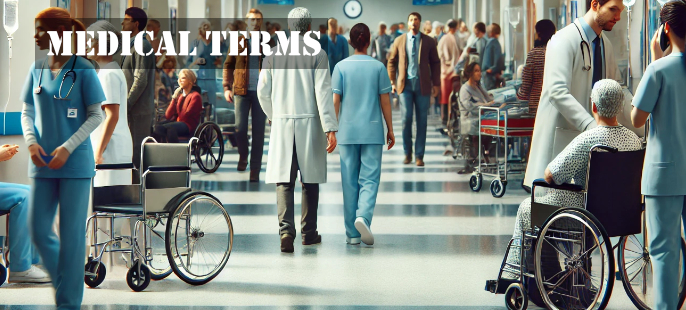Introduction to Basal Ganglia Stroke
The basal ganglia, a group of nuclei in the brain, play a critical role in controlling movement, emotional responses, and cognitive functions. A stroke affecting the basal ganglia can lead to significant neurological deficits, impacting a patient’s quality of life. This article delves into the medical intricacies of basal ganglia stroke, exploring its pathophysiology, clinical presentation, diagnosis, treatment options, and rehabilitation strategies.
Pathophysiology of Basal Ganglia Stroke
Basal ganglia strokes are usually ischemic or hemorrhagic in nature. An ischemic stroke occurs due to an obstruction in blood flow, often from a thrombus or embolus, leading to tissue ischemia and infarction. Hemorrhagic strokes result from bleeding within the brain, often due to hypertension or aneurysmal rupture, causing direct damage and increased intracranial pressure.
The basal ganglia receive blood supply primarily from the lenticulostriate arteries, branches of the middle cerebral artery. Occlusion or rupture of these small penetrating arteries can lead to a stroke, affecting areas such as the caudate nucleus, putamen, globus pallidus, and substantia nigra. The specific symptoms depend on the location and extent of the stroke within the basal ganglia.
Clinical Presentation of Basal Ganglia Stroke
Patients with a basal ganglia stroke may present with a variety of motor, sensory, and cognitive symptoms. Common motor symptoms include hemiparesis, hemiplegia, and movement disorders such as tremors or chorea. Sensory deficits may also occur, along with changes in speech, such as dysarthria.
Cognitive and emotional changes are not uncommon, as the basal ganglia are involved in processing emotions and regulating mood. Patients might experience apathy, depression, or changes in personality. The specific presentation can vary greatly depending on the stroke’s location and size, as well as individual patient factors.
Diagnosis of Basal Ganglia Stroke
Timely and accurate diagnosis of a basal ganglia stroke is crucial for effective management. Neuroimaging plays a key role in diagnosis. A non-contrast computed tomography (CT) scan is typically the first imaging modality used in the acute setting to differentiate between ischemic and hemorrhagic strokes.
Magnetic resonance imaging (MRI), particularly diffusion-weighted imaging (DWI), offers greater sensitivity in detecting early ischemic changes and provides detailed information about the stroke’s location and extent. Additional imaging studies, such as magnetic resonance angiography (MRA) or CT angiography (CTA), can help identify the underlying vascular pathology.
Treatment of Basal Ganglia Stroke
The management of basal ganglia stroke depends on whether the stroke is ischemic or hemorrhagic. In ischemic strokes, reperfusion therapy is the cornerstone of treatment. Intravenous thrombolysis with tissue plasminogen activator (tPA) is indicated within a specific time window from symptom onset, typically up to 4.5 hours.
Endovascular thrombectomy may be considered in selected patients with large vessel occlusion. Antiplatelet therapy, anticoagulation, and management of risk factors such as hypertension, diabetes, and hyperlipidemia are essential components of secondary prevention.
For hemorrhagic strokes, treatment focuses on controlling intracranial pressure, managing hypertension, and preventing complications such as seizures. Surgical intervention may be necessary in cases of large hematomas or significant mass effect.
Rehabilitation and Recovery
Rehabilitation is a vital part of the recovery process for patients who have experienced a basal ganglia stroke. A multidisciplinary approach involving physical therapy, occupational therapy, speech therapy, and neuropsychological support is essential to maximize functional recovery and improve quality of life.
Early mobilization and intensive rehabilitation programs are associated with better outcomes. The rehabilitation process is tailored to each patient’s specific deficits and goals, focusing on regaining motor skills, improving speech and cognitive functions, and enhancing independence in daily activities.
Prognosis and Long-Term Management
The prognosis for basal ganglia stroke varies depending on the stroke’s severity, location, and the patient’s overall health. While some patients may experience significant recovery, others may have persistent deficits requiring long-term management.
Ongoing management includes regular monitoring of vascular risk factors, lifestyle modifications, and adherence to medications to prevent recurrent strokes. Support from healthcare professionals, family, and community resources is crucial in helping patients adapt to any long-term changes in function.
Conclusion
Basal ganglia strokes present a complex clinical challenge due to their varied symptoms and potential impact on motor, sensory, and cognitive functions. Understanding the underlying pathophysiology, early diagnosis, and prompt treatment are critical in improving outcomes. Comprehensive rehabilitation and long-term management strategies are essential to support recovery and enhance the quality of life for patients affected by this condition.

